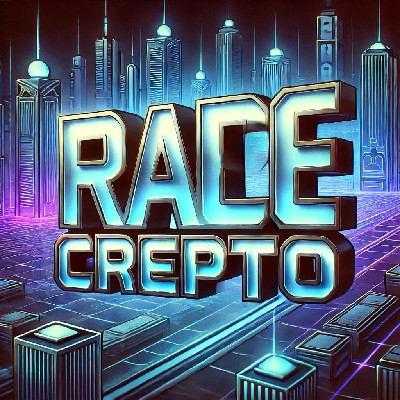
ที่เกี่ยวข้องกับเหรียญ
เครื่องคำนวณราคา
ประวัติราคา
การคาดการณ์ราคา
การวิเคราะห์ทางเทคนิค
คู่มือการซื้อเหรียญ
หมวดหมู่คริปโต
เครื่องคำนวณกำไร
ที่เกี่ยวข้องกับการเทรด
ซื้อ/ขาย
การฝาก/การถอน
Spot
Margin
USDT-M Futures
Coin-M Futures
บอทเทรด
Copy Trading
Earn
Pre-Market

ราคา CoreCORE
คุณรู้สึกอย่างไรบ้างเกี่ยวกับ Core ในวันนี้
ราคาของ Core วันนี้
ราคาสูงสุดของ CORE คือเท่าไร
ราคาสูงสุดของ CORE คือเท่าไร
การคาดการณ์ราคา Core
ช่วงไหนเป็นจังหวะที่ดีในการซื้อ CORE ตอนนี้ควรซื้อหรือขาย CORE
ราคา CORE จะเป็นเท่าใดในปี 2026
ราคา CORE จะเป็นเท่าใดในปี 2031
ประวัติราคา Core (THB)
 ราคาต่ำสุด
ราคาต่ำสุด ราคาสูงสุด
ราคาสูงสุด 
ข้อมูลตลาดของ Core
ตลาด Core
ยอดถือครอง Core
เมทริกซ์การกระจายยอดถือครอง Core
ยอดถือครอง Core ตามการกระจุกตัว
Core Address ตามระยะเวลาถือครอง

เรตติ้ง Core
เกี่ยวกับ Core (CORE)
Celo คืออะไร
Core คือบล็อคเชนชั้นหนึ่งแห่งยุคถัดไป โครงการนี้ใช้กลไกใหม่ที่เรียกว่า Satoshi Plus ซึ่งพัฒนาขึ้นเพื่อแก้ปัญหาบล็อคเชนสามประการ ซึ่งเป็นความท้าทายทางเทคโนโลยีที่เครือข่ายบล็อคเชนสามารถบรรลุคุณสมบัติหลักสองในสามเท่านั้น: ความปลอดภัย ความสามารถในการปรับขนาด และการกระจายอำนาจ แนวทางที่เป็นนวัตกรรมใหม่ของ Core ช่วยให้สามารถรักษาความปลอดภัยและการกระจายอำนาจที่เหมาะสมที่สุด ในขณะเดียวกันก็บรรลุความสามารถในการปรับขนาดสูง ทำให้เป็นโซลูชันที่น่าหวังในองค์กรอิสระที่มีการกระจายอำนาจ (DAO) และภาคส่วน DeFi
เมนเน็ตของ Core ซึ่งเปิดตัวเมื่อวันที่ 14 มกราคม 2023 ได้ประมวลผลธุรกรรมนับล้านรายการแล้ว รองรับสัญญาอัจฉริยะและแอปกระจายอำนาจ (DApps) ที่หลากหลาย โดยมีจุดมุ่งหมายเพื่อใช้เป็นแกนหลักของ web3 โดยผสานรวมคุณลักษณะที่ดีที่สุดของบล็อกเชนที่มีชื่อเสียง เช่น Bitcoin, Ethereum, Solana และ Polygon และมุ่งเน้นไปที่การกำกับดูแลที่นำโดยผู้ใช้ เพื่อให้มั่นใจว่าเครือข่ายไม่มีโครงสร้างรอบผู้ก่อตั้งหรือนักพัฒนารายใดรายหนึ่ง โดยยังคงรักษา การเข้าถึงและการกระจายอำนาจในระดับสูง ในเดือนเมษายน ปี 2023 Core ได้รับเงินลงทุน 50 ล้านดอลลาร์จาก Bitget ซึ่งเป็นบริษัทแลกเปลี่ยนแบบรวมศูนย์ชั้นนำของโลก
แหล่งข้อมูล
Whitepaper: https://docs.coredao.org/core-white-paper-v1.0.5/
Official Website: https://www.coredao.org/
หลักทำงานอย่างไร?
Core ดำเนินการบนฉันทามติ Satoshi Plus ที่ได้รับสิทธิบัตร ซึ่งเป็นกลไกไฮบริดที่ผสมผสาน Proof of Work (PoW) และ Delegated Proof of Stake (DPoS) ทำให้สามารถใช้ประโยชน์จากทั้งกลไกฉันทามติที่ปลอดภัยของ Bitcoin และกลไกฉันทามติที่ปรับขนาดได้ของ Ethereum ฉันทามตินี้ช่วยให้มั่นใจได้ว่าแต่ละบล็อกที่เพิ่มลงในบล็อกเชนต้องได้รับการตรวจสอบจากผู้ถือ CORE ในปัจจุบันและพลังการประมวลผล ทำให้เกิดบัญชีแยกประเภทที่ปลอดภัย เชื่อถือได้ และกระจายอำนาจ
ผู้ตรวจสอบในเครือข่ายหลักมีหน้าที่รับผิดชอบในการผลิตบล็อกและการตรวจสอบธุรกรรม และพวกเขาจะได้รับเลือกตามการรวมกันของโทเค็น CORE ที่เดิมพันและพลังแฮช เพื่อให้มั่นใจว่าการผสมผสาน PoW และ DPoS ที่สมดุลและมีประสิทธิภาพ แนวทางนี้ช่วยให้แม้แต่ผู้ถือโทเค็นรายเล็กสามารถมีส่วนร่วมในการกำกับดูแลเครือข่ายและการตรวจสอบธุรกรรม ซึ่งช่วยเพิ่มการกระจายอำนาจและความสามารถในการปรับขนาดของเครือข่าย
การบูรณาการของ Core กับ Ethereum Virtual Machine (EVM) และโปรโตคอล 0x ช่วยให้มั่นใจได้ถึงความเข้ากันได้กับสัญญาอัจฉริยะของ Ethereum และการแลกเปลี่ยนโทเค็นแบบกระจายอำนาจ ตามลำดับ ทำให้ผู้ใช้มีความยืดหยุ่น ความสามารถในการจ่าย และการเข้าถึงได้ การกำกับดูแลของ Core ได้รับการจัดการโดย Core DAO ช่วยให้สมาชิกชุมชนสามารถยื่นข้อเสนอ ลงคะแนนข้อเสนอแนะ และออกแผน เพื่อให้มั่นใจว่าโครงสร้างการกำกับดูแลที่มีการกระจายอำนาจอย่างแท้จริงและนำโดยผู้ใช้
CORE Token คืออะไร?
CORE เป็นโทเค็นยูทิลิตี้และการกำกับดูแลดั้งเดิมของเครือข่าย Core โดยมีโทเค็นทั้งหมด 2.1 พันล้านโทเค็น ใช้สำหรับการชำระค่าธรรมเนียมการทำธุรกรรม การวางเดิมพันในเครือข่ายหลัก และการเข้าร่วมในกระบวนการกำกับดูแลของ Core DAO มีการวางแผนการแจกจ่ายโทเค็น โดยมุ่งเน้นไปที่การกระจายอย่างยุติธรรมระหว่างผู้ใช้ ผู้ร่วมสร้าง การขุดโหนด ทุนสำรอง คลัง และรางวัลผู้ส่งต่อ หลีกเลี่ยงการรวมศูนย์และรับประกันการมีส่วนร่วมของชุมชนในวงกว้าง
Core ยังใช้โมเดลการเบิร์นโทเค็น ซึ่งคล้ายกับของ Ethereum โดยส่วนหนึ่งของรางวัลบล็อกและค่าธรรมเนียมการทำธุรกรรมจะถูกเผา เพื่อเพิ่มมูลค่าให้กับโทเค็น โทเค็น CORE พร้อมสำหรับการซื้อขายบนการแลกเปลี่ยน crypto ที่สำคัญ ทำให้ผู้ใช้สามารถมีส่วนร่วมในระบบนิเวศ Core DAO ได้อย่างง่ายดายและรับประโยชน์จากเทคโนโลยีที่เป็นนวัตกรรม
ผลกระทบของ Celo ในด้านการเงิน
แนวทางที่เป็นเอกลักษณ์ของ Core ในการแก้ปัญหาสามประการของบล็อกเชน ทำให้ Core เป็นผู้เล่นสำคัญในภาค DeFi และบล็อกเชน การกำกับดูแลที่นำโดยผู้ใช้และกลไกฉันทามติที่เป็นนวัตกรรมสามารถสร้างมาตรฐานใหม่ด้านความปลอดภัย การกระจายอำนาจ และความสามารถในการขยายขนาด ซึ่งดึงดูดความสนใจจากผู้สนับสนุนและนักพัฒนา DeFi
ความร่วมมือของ Core กับ Bitget ซึ่งเป็นหนึ่งในการแลกเปลี่ยนแบบรวมศูนย์ที่ใหญ่ที่สุด ซึ่งเกี่ยวข้องกับการลงทุน 50 ล้านดอลลาร์ในกองทุนระบบนิเวศของ Core DAO ตอกย้ำศักยภาพของบริษัทในการนำการกระจายอำนาจมาสู่มวลชน และสนับสนุนการพัฒนาโครงการระยะเริ่มต้นในพื้นที่บล็อกเชน ความร่วมมือนี้มีจุดมุ่งหมายเพื่อส่งเสริมนวัตกรรม ให้ความช่วยเหลือทางการเงินแก่โครงการที่มีศักยภาพ และสนับสนุนรายชื่อโครงการในระบบนิเวศ CORE ซึ่งช่วยให้หลายล้านคนสามารถมีส่วนร่วมและรับประโยชน์จากเทคโนโลยีปฏิวัติวงการของ Core DAO
อะไรเป็นตัวกำหนดราคาของ Core?
ราคาของ Core ก็เหมือนกับสกุลเงินดิจิทัลอื่น ๆ ที่ได้รับอิทธิพลจากปัจจัยมากมาย ซึ่งสะท้อนถึงความเคลื่อนไหวของตลาดสกุลเงินดิจิทัล แนวทางที่เป็นเอกลักษณ์ของ Core ในด้านเทคโนโลยีบล็อกเชน ผสมผสาน Proof of Work และ Delegated Proof of Stake ผ่านความเห็นพ้องต้องกันของ Satoshi Plus ทำให้ Core เป็นหน่วยงานที่โดดเด่นในข่าวสกุลเงินดิจิทัล ซึ่งอาจส่งผลกระทบต่อราคาของมัน ราคาสกุลเงินดิจิทัลมักจะขึ้นอยู่กับแนวโน้มของตลาด การพัฒนาด้านกฎระเบียบ และความรู้สึกโดยรวมในชุมชนสกุลเงินดิจิทัล ความร่วมมือของ Core ความก้าวหน้าทางเทคโนโลยี และอัตราการนำไปใช้ โดยเฉพาะอย่างยิ่งความร่วมมือกับ Bitget ซึ่งเป็นการแลกเปลี่ยนชั้นนำ มีบทบาทสำคัญในการประเมินมูลค่าตลาด ทำให้เป็นจุดศูนย์กลางสำหรับการวิเคราะห์และการหารือเกี่ยวกับสกุลเงินดิจิทัลระหว่างผู้ที่ชื่นชอบสกุลเงินดิจิทัลและผู้เชี่ยวชาญ
การคาดการณ์ราคาสกุลเงินดิจิทัลสำหรับ Core นั้นเป็นการคาดการณ์โดยธรรมชาติ เนื่องจากความผันผวนของตลาดสกุลเงินดิจิทัล และควรดำเนินการด้วยความระมัดระวัง นักลงทุนที่ต้องการซื้อสกุลเงินดิจิทัล โดยเฉพาะ Core ควรพิจารณาปัจจัยต่างๆ รวมถึงความปลอดภัยของสกุลเงินดิจิทัล ความเสี่ยง และความเป็นไปได้ในระยะยาวของโครงการ ราคาของ Core ยังได้รับอิทธิพลจากโทคีโนมิกส์ รวมถึงการเปลี่ยนแปลงของอุปสงค์และอุปทาน โมเดลการเผาไหม้โทเค็น และกลยุทธ์การกระจาย ซึ่งเป็นส่วนสำคัญในแผนภูมิและการวิเคราะห์สกุลเงินดิจิทัล ความพร้อมใช้งานของ CORE ในการแลกเปลี่ยนชั้นนำ เช่น Bitget ช่วยให้สามารถเข้าถึงนักลงทุนในวงกว้างขึ้น ซึ่งอาจผลักดันอุปสงค์และราคา
สำหรับผู้ที่กำลังคิดว่าจะซื้อสกุลเงินดิจิทัลอย่าง Core ได้ที่ไหน และไม่ว่าจะเป็นการลงทุนที่ดี การทำวิจัยอย่างละเอียด ติดตามข่าวสารเกี่ยวกับสกุลเงินดิจิทัล และการพิจารณาคำแนะนำจากผู้เชี่ยวชาญด้านสกุลเงินดิจิทัลถือเป็นสิ่งสำคัญยิ่ง โซลูชันที่เป็นนวัตกรรมของ Core สำหรับการบล็อกเชน trilemma และความมุ่งมั่นในการกระจายอำนาจและการรักษาความปลอดภัย ทำให้ Core เป็นคู่แข่งที่โดดเด่นในพื้นที่ crypto ซึ่งอาจเป็นการลงทุน crypto ที่ดีที่สุดสำหรับปี 2023 และต่อ ๆ ไป อย่างไรก็ตาม ผู้มีโอกาสเป็นนักลงทุนควรใช้กลยุทธ์การซื้อขายสกุลเงินดิจิทัลที่ดี พิจารณาผลกระทบทางภาษีของสกุลเงินดิจิทัล และจัดการพอร์ตโฟลิโอสกุลเงินดิจิทัลอย่างมีประสิทธิภาพเพื่อนำทางความซับซ้อนและความผันผวนของตลาดสกุลเงินดิจิทัล
บทความที่เกี่ยวข้องกับ XRP
Bitget ยกย่องอุดมการณ์ของ Satoshi ผ่านความมุ่งมั่นมูลค่า 50 ล้านเหรียญสหรัฐในกองทุน Core DAO Ecosystem
CORE เป็นสกุลเงินท้องถิ่น
- 1
- 2
- 3
- 4
- 5
วิธีซื้อ Core(CORE)

สร้างบัญชี Bitget ของคุณแบบฟรีๆ

ยืนยันบัญชีของคุณ

แปลง Core เป็น CORE
เทรด CORE Perpetual Futures
หลังจากทำการสมัครบน Bitget และซื้อ USDT หรือโทเค็น CORE สำเร็จแล้ว คุณสามารถเริ่มเทรดอนุพันธ์ รวมถึง CORE Futures และการเทรด Margin เพื่อเพิ่มรายได้ของคุณได้เลย
ราคาปัจจุบันของ CORE คือ ฿15.91 โดยมีการเปลี่ยนแปลงราคา 24 ชั่วโมงอยู่ที่ +5.83% นักเทรดสามารถทำกำไรได้จากการเปิด Long หรือ Short ใน CORE Futures
เข้าร่วม CORE Copy Trading โดยการติดตาม Elite Trader
ข่าว Core

ซื้อเพิ่ม
คำถามที่พบบ่อย
ราคาปัจจุบันของ Core คือเท่าไร
ปริมาณการเทรด 24 ชั่วโมงของ Core คือเท่าไร
All Time High ของ Core คือเท่าไร
ฉันสามารถซื้อ Core บน Bitget ได้หรือไม่
ฉันสามารถรับรายได้คงที่จากการลงทุนใน Core ได้ไหม
ฉันจะซื้อ Core ด้วยค่าธรรมเนียมต่ำที่สุดได้จากที่ไหน
ซื้อ Core (CORE) ได้ที่ไหน
ส่วนวิดีโอ — ยืนยันฉับไว เทรดได้รวดเร็ว

แหล่งข้อมูล CORE
แท็ก:
Bitget Insights




สินทรัพย์ที่เกี่ยวข้อง



































Social Data ของ Core
ในช่วง 24 ชั่วโมงที่ผ่านมา คะแนนความเชื่อมั่นบนโซเชียลมีเดียสำหรับ Core อยู่ที่ 4 และความเชื่อมั่นบนโซเชียลมีเดียต่อเทรนด์ราคาของ Core มีลักษณะ Bullish ทั้งนี้ คะแนนโซเชียลมีเดียโดยรวมของ Core อยู่ที่ 496 ซึ่งถูกจัดอยู่ในอันดับที่ 144 จากบรรดาคริปโทเคอร์เรนซีทั้งหมด
จากข้อมูลของ LunarCrush ในช่วง 24 ชั่วโมงที่ผ่านมา มีการกล่าวถึงคริปโทเคอร์เรนซีบนโซเชียลมีเดียทั้งหมด ครั้ง โดย Core ได้รับการกล่าวถึงด้วยอัตราความถี่ 0.01% ซึ่งถูกจัดอยู่ในอันดับที่ 335 จากบรรดาคริปโทเคอร์เรนซีทั้งหมด
ในช่วง 24 ชั่วโมงที่ผ่านมา มีผู้ใช้ที่ไม่ซ้ำกันทั้งหมด 496 รายที่พูดคุยเกี่ยวกับ Core โดยมีการกล่าวถึง Core ทั้งหมด 140 ครั้ง อย่างไรก็ตาม เมื่อเปรียบเทียบกับช่วง 24 ชั่วโมงก่อนหน้านี้ พบว่าจำนวนผู้ใช้ที่ไม่ซ้ำกัน ลดลง ถึง 11% และจำนวนการกล่าวถึงทั้งหมด เพิ่มขึ้น ถึง 180%
บน Twitter มี Tweet ที่กล่าวถึง Core ทั้งหมด 2 รายการในช่วง 24 ชั่วโมงที่ผ่านมา โดยใน Tweet ดังกล่าว มี 100% กำลัง Bullish กับ Core, 0% กำลัง Bearish กับ Core และ 0% อยู่ในสภาวะเป็นกลางกับ Core
ใน Reddit มี 2 โพสต์ที่กล่าวถึง Core ใน 24 ชั่วโมงที่ผ่านมา เมื่อเทียบกับช่วง 24 ชั่วโมงก่อนหน้า จำนวนการกล่าวถึงลดลงถึง 50%
ภาพรวมโซเชียลทั้งหมด
4